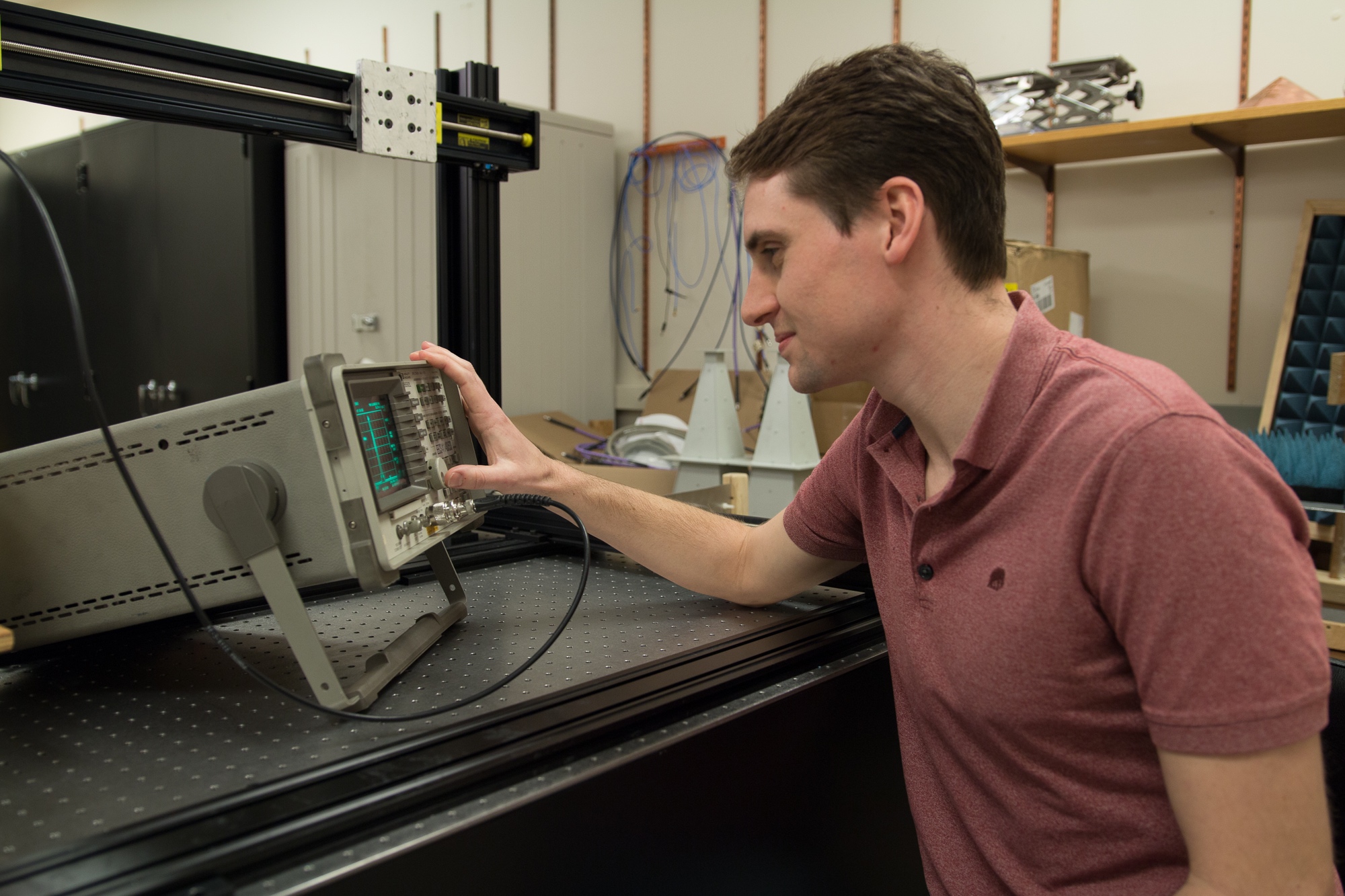Time-varying metamaterials for next generation communication, sensing, and defense systems
With $7.5M MURI grant, Professor Anthony Grbic is developing metamaterials for a new generation of integrated electromagnetic and photonic systems.
Professor Anthony Grbic is a key member of a new $7.5M Multidisciplinary University Research Initiative (MURI) to develop more efficient and cost-effective ways to transmit and receive electromagnetic waves. The project could lead to breakthroughs in areas such as next-generation wireless communication, commercial and military radar systems, imaging, and antenna systems.
The goal of the project is to develop magnet-free, non-reciprocal metamaterials that can break the time reversal symmetry of conventional electromagnetic systems. Metamaterials are subwavelength-structured, man-made materials that manipulate electromagnetic waves or sound in ways that don’t occur in nature.
Traditional electromagnetic systems are reciprocal, where the transmitter and the receiver can be interchanged and signal transmission remains the same. This means that the transmission channel is symmetric, linear, and doesn’t vary with time. For example, when two people talk to each other via radio, they can’t send and receive messages at the same time on the same frequency: one person has to wait for the other person to stop talking before they can respond.

 Enlarge
Enlarge
However, by breaking reciprocity, signals can be simultaneously transmitted and received on the same frequency band. This reduces the amount of required bandwidth, which makes the communication more spectrally efficient, allowing higher data rates.
Magnetic materials and external magnets can break reciprocity, but they tend to be bulky, expensive, and difficult to integrate, making them incompatible with modern electronic and photonic systems.
In this project, Prof. Grbic is using time modulation instead of magnetics to develop non-reciprocal metamaterials. Basicaly, he changes the surface properties of the metamaterials in time. For example, if you were to use Doppler radar (which is what the police use to catch you speeding) on a time-varying metamaterial, the material would shift the frequency so the radar would read a speed different from the actual velocity. Changing a metamaterial’s properties with time in a preferred direction will affect transmission and reception in different ways, thereby breaking reciprocity.
The resulting time-modulated, non-reciprocal metamaterials are expected to outperform magnet-based approaches while also being cost-effective, compact, and compatible with electronic integration.
Many of the things that you took for granted, you can’t anymore, and that’s what really excites me. Just wacky wild stuff - that’s why we’re here.
Prof. Anthony Grbic
The lead institution for the MURI is the City University of New York (Prof. Andrea Alù), and additional partner institutions are Stanford (Prof. Shanhui Fan and Prof. Amir Safavi-Naeini) and Columbia (Prof. Michal Lipson and Prof. Harish Krishnaswamy). Partner institutions include EPFL in Switzerland (Prof. Tobias Kippenberg) and Aalto University in Finland (Prof. Sergei Tretyakov). The MURI proposal is titled “Magnet-Free Non-Reciprocal Metamaterials Based on Spatio-Temporal Modulation.”
“I’m excited to be working with this great team to develop structures that transcend the reciprocal, time invariant, and linear responses characteristic of metamaterials today,” Prof. Grbic said of the project. “Many of the things that you took for granted, you can’t anymore, and that’s what really excites me. Just wacky wild stuff – that’s why we’re here.”






 MENU
MENU 
